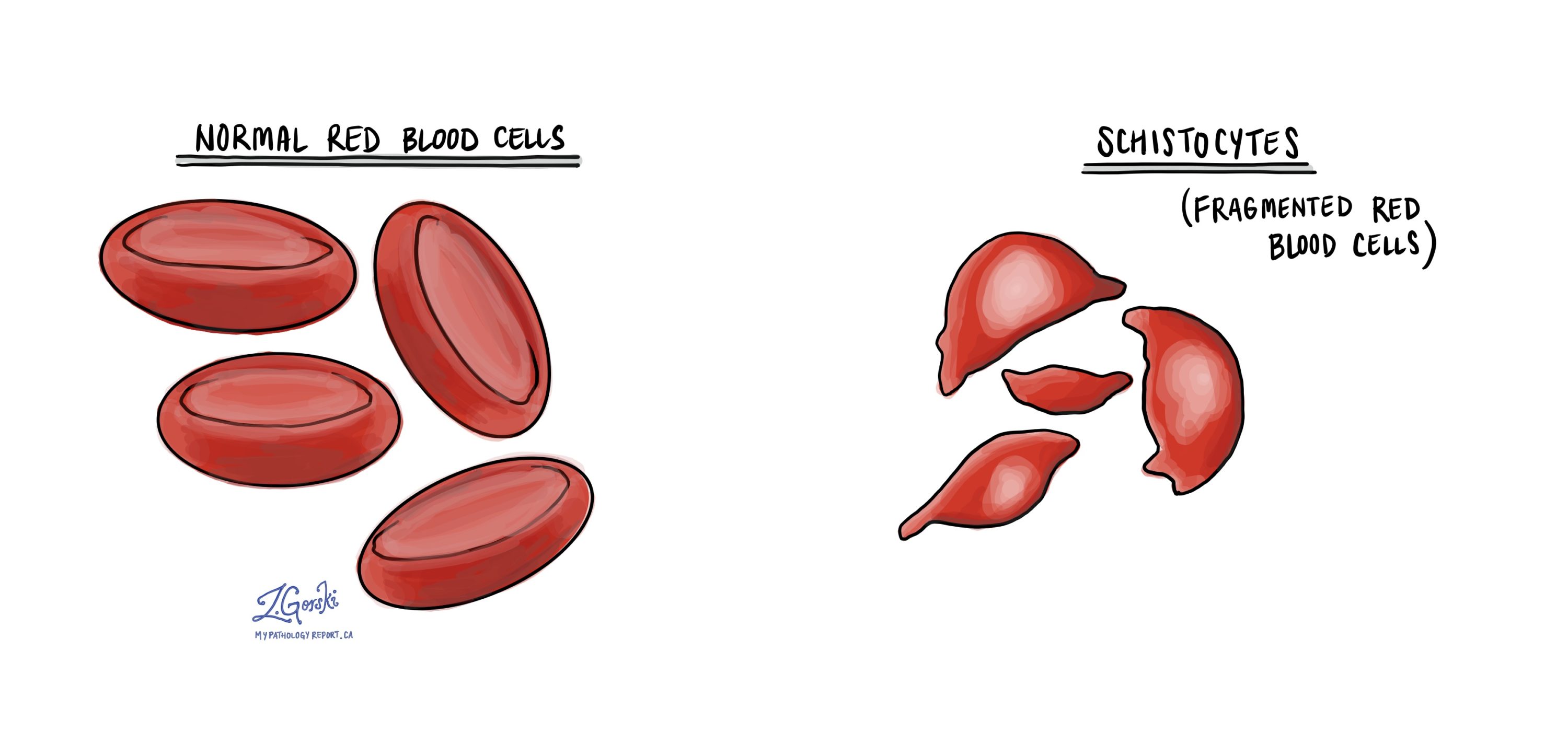Schistocytes are small, fragmented pieces of red blood cells (RBCs) that can be seen circulating in the blood. Normally, red blood cells have a smooth, round shape, but schistocytes appear broken or irregular. These fragmented cells are created when red blood cells pass through damaged or narrowed blood vessels and become damaged themselves.
Why are schistocytes important?
The presence of schistocytes helps doctors recognize that something unusual is happening inside the blood vessels. Finding these fragments often indicates underlying medical conditions or problems involving blood flow and circulation. Recognizing schistocytes helps doctors diagnose and monitor these conditions, guiding appropriate treatment and management decisions.
What causes schistocytes to form?
Schistocytes form when red blood cells are physically damaged while traveling through the bloodstream. Several medical conditions can cause this type of damage, including:
-
Hemolytic anemia – A condition where red blood cells break down faster than the body can replace them.
-
Thrombotic thrombocytopenic purpura (TTP) – A rare blood disorder characterized by small blood clots forming in tiny blood vessels throughout the body.
-
Disseminated intravascular coagulation (DIC) – A serious condition that causes widespread clotting and bleeding simultaneously.
-
Mechanical damage – Such as damage from artificial heart valves or certain medical devices that physically injure red blood cells as they move through the circulation.
How do pathologists identify schistocytes?
Pathologists identify schistocytes by carefully examining a blood sample under a microscope. Schistocytes look fragmented, irregularly shaped, and smaller than healthy red blood cells. Recognizing their presence helps pathologists and doctors pinpoint specific medical conditions affecting blood cells.
What happens if schistocytes are found in my blood?
If schistocytes are identified in your blood, your doctor will likely recommend additional testing to determine why they are present. This might include further blood tests, imaging studies, or consultations with specialists to determine the underlying cause. Identifying and treating the cause of schistocytes is important to prevent complications and improve overall health.
Questions to ask your doctor
If your blood test mentions schistocytes, you might want to ask your doctor:
-
What does the presence of schistocytes mean for my health?
-
Do I need additional testing to determine the cause of these fragmented cells?
-
What condition do you suspect might be causing the schistocytes?
-
What treatments or follow-up care might be necessary?
Understanding schistocytes and what their presence indicates can help you feel informed and actively involved in managing your health.




